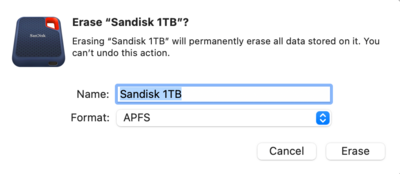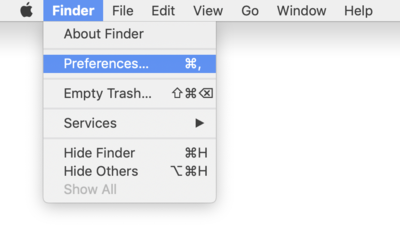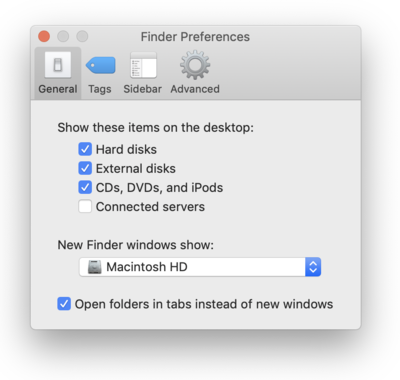-
Posts
4,103 -
Joined
-
Last visited
-
Days Won
52
Everything posted by Brian
-
Yes, leave it at the default! Select GUID Partition Map!!! The Master Boot Record is for Windows Partitions, which we aren't doing, and the Apple Partition Map is for really old Macs from the 1990's.
-
Alright, you are 99% there since you already know about Disk Utility. Just click the "Erase" Button at the top and you should see something like this pop-up: Your name might be different, and that's fine, but the important choice you need to make is for the Format. Simply choose APFS in the choices menu. NO (Encrypted) NO (Case-sensitive) NO (Case-sensitive, Encrypted) None of that. JUST APFS all by itself. Give it a name that is obvious to you, like Thunderbolt 4TB or something along those lines. Then click Erase. After a few seconds you should see your new drive appear on the Mac Desktop. I'd copy over a simple file to your new drive as a read/write test, and when that works, copy over all the images / data files on your existing EHD, the one that has all of the issues. Do not copy the Time Machine Files. Leave them alone. Also, DO NOT MOVE / CLICK AND DRAG!!! I want you to do a "Select All" on that 4TB EHD and then choose "Copy." Open the new 4TB and select "Paste." Do nothing else on your computer. Just let it do it's thing. Bonus Points: Use the new Thunderbolt Drive in the Thunderbolt Port. The difference between the two is if you move / cut / drag files over, you are deleting the source material as it attempts the copy. If something were to go wrong, and you had to cancel the data transfer, you are fucked, to put it bluntly. By doing a Copy / Paste, the original source files stay intact. This way if something were to screw up, you hit cancel and try again. After you are 110% sure that all of your images / data files are on the new drive, we are going to Nuke that existing EHD, and then set it up for Time Machine only. So get your new drive squared away and report back.
-
Cool. Since it's a SSD Drive, we will skip the Mac OS Extended (Journaled) Partition Type and head straight to Apple's newest Partition Type, call APFS. The first step we need to do is to check how it's setup and the easiest way it to turn on the HDs to be visible on the desktop: Open the Finder. The easiest way is to click the Smiley Face on your DockBar: Then head to the Finder Menu (Next to the Apple Menu) and select Preferences: Once there put check-marks next to these items and change the bottom to "Macintosh HD" if you want: Finally, Click the Red Circle in the Upper Left Corner to save the new changes and close the Preferences box. Now when you insert an External HD or Camera Memory Card into a Card Reader, they will appear on the Mac Desktop. For example: From there, hook up your new HD on your Mac and right-click and select "Get Info." Post a screenshot. Then we will head to step two.
-
I'm already confused. This is where things can go horribly wrong if you use the Time Machine Drive as a Data / Images Drive. It sounds like you have backups on a backup that's backing up your backups. Clear as mud? If you have a separate backup of your images and other data files, the Time Machine Drive isn't as "Critical" as one might think; sure, it's a pretty good back up of your Internal HD, which includes the Operating System, but the truth is, you can recover the OS and re-install your programs. What I would do, is Nuke the Time Machine Drive, re-partition it with Mac OS Extended (Journaled) [no Case-Sensitive thingys whatsoever,] then go into Time Machine and choose that drive to backup on. Then do a fresh FULL Time Machine Backup. My main concern is the case-sensitive stuff. I'm not sure what it's doing to any files that might be on that drive. That said, I think it's MUCH more important to purchase another external drive. The safe bet is for you to purchase a true Thunderbolt Drive, such as this one: SanDisk Professional 4TB PRO-G40 SSD or better yet, this one: SanDisk Professional 12TB G-Drive Project - External HDD, Thunderbolt 3. Just having a Thunderbolt Adapter does not make it a true Thunderbolt Drive. You need the actual technology. Thunderbolt drives are NOT CHEAP. They are expensive, so if this EHD was $129 or less, it's NOT a TB Drive. Now, as soon as you get either drive, I want you to stop and take a breath. Chances are, they are in the exFAT Format, which makes them compatible with both Mac & Windows computer systems. Sounds ideal, right? Wrong. exFAT is unpredictable as hell, and it's VERY difficult to recover from if things go sideways. I will never-ever-ever-ever, like EVER...recommend a member here using exFAT. In fact, some folks are determined to, and that's fine, but they will not get ANY help from me and they are on their own if something goes wrong. So pick a format, Mac >>OR<< Windows. Whichever drive you choose, as soon as you get it, run it by me first. Spinning Hard Drives you use mac OS Extended (Journaled). SSD Drives, like that Sandisk 4TB that are flash based, get APFS. For example, here is my 12TB G-Drive that is a traditional spinning EHD, with a Sandisk 1TB SSD Drive attached to it: So what I want you to do, is purchase a true Thunderbolt External HD. Get back to me. Then we will format/partition it correctly, depending on the type of drive, THEN we will mess with your data / images. All very logical and linear, one-step-at-a-time. After we get your images settled and other important data, we will then mess with the Time Machine stuff. Oh, to answer your question, YES!! THUNDERBOLT IS WAAAAAAAAAAAAY FASTER THAN USB 3.0!! If you notice, that 12TB Sandisk has 10Gbps Throughput when using Thunderbolt, if you use USB 3.0...that's only 5Gbps. If you go higher and get a TB4 or TB5 drive, the speed is even faster. Especially if you skip the spinning HD and go with a flash-based EHD, then you get speeds of 40Gbps vs 10/5. (There is a bottleneck when it comes to mechanical HDs. The spinning disks can only read/write only so fast. Flash based media doesn't have this problem, but you don't get large capacity drives with flash-based media. Make sense? If you want storage capacity, it's a traditional spinning EHD. You want read/write speed? Then a Flash Based Drive is what you want, but it caps out around 4TB.)
-
Just keep saving!!! Why? Because you are going to be spending money either way. Staying Mac or switching back to Windows. The Era of the "$999 Computer Special" is over.
-
You are also using this drive for Time Machine? If so that’s also VERY BAD. You want your Time Machine Drive all by itself. No other files. You are asking for problems if you do. In addition, you only need about double the capacity of your internal HD, so if you have a 1TB HD, a 2TB-4TB drive is fine. I am curious about using case sensitive for Time Machine, that doesn’t seem right; I’ve never used it on my Macs. I’d love to see the error message. Personally, I have two external HDs hooked up to my machine. A Time Machine Drive hooked up to a USB Port, and a much larger External HD hooked up to a Thunderbolt Port. Thunderbolt is extremely fast, MUCH faster than using a USB 3.0 Port. Seriously, it’s like using the internal HD. So you might want to invest in a larger Thunderbolt Drive, partition it properly and copy over the files on that 4TB. Then nuke the 4TB drive and use it for Time Machine only.
-
The problem is, Macs do not like 4k screens. They will "work," but will look like total ass. Yes, Apple does this on purpose. If you must go 3rd party for the display, make sure it's a 5K Screen! What's so bad about 4K screens? Apple doesn't scale well with them and things like text, look like absolute garbage. Oh, bonus points... Apple changed the signal coming out of the HDMI Port. It might change to a YUV Limited Range and it will cause banding. At least this happens on fancy EIZO displays and there is a Tech Bulletin from them about this issue. So keep an open mind and be prepared to fork out money for the Apple Studio Display...because Apple does this on purpose. If you do go 3rd party, really pixel-peep and don't settle / fool yourself. The old Intel-based Macs really didn't have this problem, it really started with the Apple Silicon (M1 - M5.) Welcome to 2026!! It's all expensive crap.
-
Why are you on Mac OS Extended Case Sensitive, Journaled for the Partition Type?!?!!! >>> YOU NEVER-EVER-EVER-EVER WANT TO USE THAT MODE. <<< You are 1/2 right, for a spinning traditional HD, you want to be on Mac OS Extended, Journaled...but no "case-sensitive" BS whatsoever. The good news? It can be fixed. The bad news? You are gonna need another HD, preferably blank drive, so you can copy all of the files off that drive, then Delete the Partition, (aka Nuke it,) and then re-partition it correctly. Then copy all of your files back. I would not recommend converting anything with files on it. You want to be working with a drive that can be erased. I can give you instructions if you wish. This is what you should have selected when creating the Partition: No Case-sensitive, Journaled...just plain 'ol Mac OS Extended (Journaled) that has been around forever.
-
Yep. Remember, the cables that come with the drives are just there to get you working, they aren't always the best quality or last. With it just working on the USB-C Port, the cable isn't managing power correctly coming from the TB Port. Time for a new, high-quality cable. I don't mess around with cables that attach to my EHDs, as they are far too important. Apple does make really good cables, though they are a bit pricey.
-
Oh, the reason that I didn't start with the cheap Mac Mini, is due to only having a $200 difference. If you add a 1TB HD to the $599 Mac Mini, it costs $999. For $200 more, you get 24GB of RAM. Currently, when it comes to Apple's products...they are glorified iPads. Meaning, there is no upgrading ANYTHING after the fact. Want to add more RAM and a bigger internal HD? You are buying a new computer.
-
Yeah, 256GB is microscopic by today's standards, IF you are doing any type of photo-editing. In reality, you will need three things: At least 32GB of RAM (Preferably 64GB if you have a high MP Camera.) 1TB for the Main HD. (2TB is optional.) This is THE most important part: A NVIDIA RTX 5070 or 5080 with at least 8GB of dedicated Video Memory, preferably 12GB+. Sure, you can go with a RTX 4070, but since they are discontinued, they are getting tough to find. If that Geekom doesn't talk about the video card, or it just says, Intel Integrated Graphics, you WILL have headaches and Photoshop Bitching the whole time you are using it. So save yourself the stress. Just worrying about a PC that has enough RAM, & HD Space, along with a "Okay-ish" CPU...that worked 15+ years ago. The modern versions of Photoshop have become really bloated with all sorts of AI and Fancy Tools; that Windows computer for $999 is not going to cut it for Photoshop headed into 2026. If you think you are saving money, think again...you are just wasting it; in reality, you need to have a realistic budget around $2500 or so because in addition to the computer, you will need a IPS-Based Display. In case you are wondering, I'd rather have you get a Intel i7 CPU (Don't bother with a i5 in 2026 when it comes to PS,) and take those savings to pay for the Dedicated Video Card. Adobe's products favor NVIDIA's video cards, and there are even video drivers that are meant for Photoshop to give things a performance boost. In addition to your Windows Computer, plan on purchasing a new / un-touched External HD, preferably something large, like 8TB or so, and software that will act as a translator to go from the Macintosh File System to the Windows File System called NTFS. Apple makes is really easy to switch from Windows, and you will have a few hurdles switching back to Windows. Some folks will recommend using something called exFAT, I am one of those people who advises against it. If you did go the Mac Mini route, to get the "Macintosh Experience" that you are used to, you unfortunately will have to fork out the $1600 for the Apple Studio Display. As far as the Mac Mini, believe it or not, the model that's a little more bare-bones will work just fine with Photoshop, for the moment. My "Tricked Out" configurations are meant to last someone around 7-8 years or so. IF you get a fancy Apple Studio Display, and a Mac Mini that's a little more tame price-wise, you can always replace it in about 18 months or so and use the same display. I just configured the more expensive Mac Mini with 24GB or RAM and upgraded the HD to 1TB. 1TB is all you need. External Hard Drives are cheaper, larger and can be used for your storage needs. At this point, ANY computer will be better than what you are dealing with currently. That Mac Mini is $1199. Plus you will need a Keyboard / Mouse and the Apple Studio Display.
-
What cable are you using on that older G-Drive? Is it a true Thunderbolt Cable? The USB-C port (without the Thunderbolt) is just that...a USB-C Port. If you want the faster transfer speeds that Thunderbolt offers, you need to use the one with the Lightening Bolt. Both a USB-C Cable and a Thunderbolt Cable use a USB-C style connector, so it can be confusing. The next step is to check your box of cables and make sure you are using an actual Thunderbolt Cable (They usually have a Lightening Bolt on the connectors) before connecting the EHD. If you aren't sure, you can purchase one such as this or just fork out the money and buy a genuine Apple Thunderbolt 5 Cable. You could use that Thunderbolt 5 Cable from the Mac to the Sandisk, then use the Sandisk's Cable from the Sandisk to the older G-Drive. How old is your Mac? I'm also wondering if there is some sort of power issue if your Mac has some years on it; but I'm leaning towards a cable problem at the moment.
-
You don’t need Anti-Virus software. It’s not the 1990’s. Believe it or not, Windows Defender is fine for what it is. Just make sure you keep it updated by running Windows updates But Avast getting in the way does make sense. McAfee, Norton / Symantec, etc have been draining resources and getting in the way for years. Thanks for the reminder.
-
Yes. Ventura is very stable and a mature OS at this point. I found no problems with PS CC 2023 and my 2017 Intel 27" iMac. If you are running CleanMyMac X, make sure you update it to the latest version before running it. Utility programs such as those need to stay current with the OS.
-
Here is an interesting read that agrees with my thinking: M4 vs. M5 Chip Buyer's Guide: How Much Better Really Is M5? Give it a read. I still think the M4 Mac Studio still has some life left in it. Maybe not a full 8-10+ years, but you should get at least 5-7 years out of the thing.
-
This is a real tough question at this point. While the M5 Macs have been released for the 14" MacBook Pro, the Desktops are rumored to be updates in April - May of 2026. Which is typical for Apple's product cycles. The tough part from my POV, is that the current M4 products and my recommendations from earlier this year are still viable, and with M5 Macs coming next year, I want to stress that the next generation is upon us. If you can hold out until then it might be worth waiting. Unfortunately, it always seems to happen at this time of year that people just can't wait any longer and NEED SOMETHING NOW!! When I configure my computer configurations, I'm building for the Photoshop and programs for years down the line. Yes, they tend to be more expensive, but I have had users get 8-10+ years out of models that I picked for them. Some folks are still running on Macs from around 2013!! That said, those folks are less these days, for obvious reasons. The good news is, Apple's pricing remains consistent from each newer model year, it's just an overall performance boost. So what to do? It really depends on your budget as there are two paths you can go as far as the Desktops are concerned: Buy a Mac Studio, especially "Brian's This Goes to 11" Configuration." Buy a Mac Mini. Save a little cash, but not as much as one would think. In either configuration, you are purchasing the 27" Apple Studio Display for $1600. Plus a new Calibrator if yours has a few years on it. The bottom line is this: Practically ALL computers today are fine for the current version of Adobe Photoshop. The issue is...how long does that computer last for the Photoshop versions a few years from now? Personally, I like 7-8 year cycles for my stuff, but if you go with a lower-end model, or last year's technology...you might be in the market sooner, rather than later. That said, if you and I had this same discussion say...4-6 months ago, I'd tell you to buy a Mac M4 Studio without second thought. For the average day-to-day stuff, there isn't THAT much difference between a M4 and a M5. The difference is, ALL OF THE AI CRAP...that will run better on a M5 in the future vs a M4. Adobe keeps adding AI Crap, so it might become an issue in about 5-6 years from now IF you went with the M4 Macs. Of course, that's if you ever use the Fancy Tools and other AI Crap. For some, 5-6 years is still decent. You will never-ever-ever win the "Catch Up Game." There will always be something bigger, better, faster, more. To paraphrase Gandalf from the Lord of the Rings, "All we have to decide is what to do with the time technology that is given us we purchase..." Scroll down to the "Mac Studio - This Goes to 11 Version" section. That's what I would buy. There's your problem. If you let your macOS get too far out of date and you buy a new fancy iPhone, with the latest iOS...you are gonna have problems. I have had the exact same issues with my 2017 iMac and when I update my iPhone 13 Pro to the latest iOS. Specifically, it's not the iPhone per se, but your iCloud Account getting in the way. How old is your Mac? I'm currently running and stuck on macOS Ventura with my 2017 Intel iMac. The next OS above this one needs a 2019 iMac. The only real way to fix this is to upgrade your macOS to the latest version that you can. Or just buy a new Mac if you want a long term solution.
-
Hold Up!!! Before buying anything, are you sure you using the latest version of the NVIDIA Studio Drivers for Windows 11? It seems that version 576.80 now supports the 5000 Series of NVIDIA's products. I also found this: Adobe Lightroom | Panning lags at 100% (1:1) zoom level | Windows 11 I also saw this: How can I override the default graphics processor for a program? Let's exhaust everything before you fork out money. I hate-hate-hate wasting money on this shit.
-
Check out "Part 2 / This Goes to 11" for what I would buy when it comes to a Mac Studio. Macintosh Recommendations - Early 2025 Version Alternatively, if you wait a few weeks and Apple comes out with a new Studio Display, you might want to pick one up and purchase a Tricked-Out Mac Mini M5 Pro, which should be released in a few weeks. You will have the benefit of having a M5 chip, and not spending as much money as you would a M4 Mac Studio. It is worth waiting a few more weeks.
-
Hmm...checking out the latest NVIDIA Studio Drivers, it doesn't list the 5000 Series of cards and were last updated a year ago. It's these drivers that are designed for Adobe's Products; I feel the drivers you are using, that are meant for video games / general computing, is the source of your issues. Plus Windows 11 is problem all by itself. (Microsoft is keeping with tradition of every-other-operating-system to be "Good." Windows XP --> Windows Vista (Sucked) --> Windows 7 -- Windows 8/8.1 (Sucked) --> Windows 10 --> Windows 11 (Sucks so far...) See a pattern? At this point, I'd wait a few weeks. Apple is about to make M5 announcements for new products. I will say, start saving, and you will be forced to purchase the stupidly over-priced Apple Studio Display if you want the full "Macintosh Experience." Yes, Apple does this on purpose, as they changed the signal coming out of the HDMI port. With the new Studio Display, you are using the Thunderbolt Port for Video. Anyway, I don't think we will see a M5 Mac Studio in November, likely it will be April / May of 2026 with the M5 chip. Apple tends to release MacBook Pros with the newest chips in the latter part of the given year. So if you can hold out until early next year, I would. No sense in blowing around $5000 not to get the latest-and-greatest. That said, I do see rumors that Apple might be updating their Displays, and the Studio Display might be refreshed. Hold off on buying anything until around Veteran's Day on the 11th. As far as feedback from others, there is A LOT of Macintosh hate, and practically everyone will tell you that it's a waste of time and money. I'm not one of those people. Buy whatever you like. One of the things that Adobe takes advantage of, is that there are only a certain number of Video Cards / Hardware that Apple uses, so it's easier to make things compatible when all you have to worry about is around 7-10 different Video Cards, vs the hundreds for the Windows side. Of course, Adobe Photoshop is Adobe Photoshop and LR is LR. As time goes on, it's becoming more and more bloated with all of this AI Crap that I'm not 100% sure you will eliminate lag entirely; I've seen Photoshop act stupid on both sides of the fence.
-

Robocopy attributes, timestamps and NTFS ACLs
Brian replied to Tereza's topic in The Windows & PC Hardware Forum
Yeah...that's not gonna work, well not the way you are thinking. It's the NTFS and ACL Permission stuff that you are wanting, it's gonna be a bit of a PITA. SharePoint online mapping isn't automatic and you will likely have to deal with users/groups permissions. Your best bet is to use the Microsoft SharePoint Migration Tool. Or try GS RichCopy 360. It's been awhile since I messed with this sort of thing. I think you should search out some FB Computer Networking Groups to see if someone has already done this as my current knowledge is limited. -
That looks like the adhesive is failing and air is getting into your display in that corner. But you are correct, it does look like water. It's only going to get worse as time goes on. This one looks decent: Dell Tower Plus Desktop What the most important thing in that configuration is the choice of Video Card. You want a NVIDIA 5070 or 5080 these days. Monitor, this one looks decent as well: Dell UltraSharp 27 Monitor - U2724D Basically, when it comes to a Display meant for photo editing, you want a IPS Display, and for resolution, 1920 x 1080 only goes up to 24". If you are interested in a 27" Display, you want 2560 x 1440. To be blunt, 1920x1080 looks like ass on a display that's larger than 24", so please avoid that resolution and don't be tempted to buy one. Just don't. Trust me. Even 24" is pushing it. I did write an article earlier this year that will be updated, Buying a Windows Computer in 2025, and I go into specifics on why I pick the things that I do. For the current versions of Adobe CC products, the choice of video card is MORE IMPORTANT THAN THE CHOICE OF CPU!!! I'd rather have a person spend less on a CPU and take those savings and put them towards a better Video Card with its own dedicated video memory. Why? Because all of the stupid AI Crap and fancy tools that Adobe keeps putting into PS utilize the Video GPU than the Computer's CPU!! Now, do I want to recommend a NVIDIA 5070? No, because a 4070 will still work fine. Unfortunately, they have been discontinued. I also do not like the "50" or "60" versions of those cards, NVIDIA likes rebranding rejects to save some money. (Just like Intel CPU chips! They ALL start out as i9 Chips, but if they fail QC and are "Good Enough," they become i7 or i5 CPUs.) That's why you can have two i7 CPUs side by side on the same desktop and one will be a little bit faster, this is due to that particular chip having just a bit more umph than the other one, but both are within specs. It's all about money.
-
Yes. Remember, there is no upgrading after the fact with current Apple products. Fortunately, Apple's price-point remains pretty steady and consistent from year-to-year. Keep in mind, you aren't buying the computer for the current version of Photoshop, but the version a year or two from now. I'd rather have you buy a current M5 if you are buying a MacBook Pro at this point. NOPE. Apple does this on purpose. If you want the "Apple Experience" that you are used to, unfortunately...you are forced in purchasing the stupidly over-priced Apple Studio Display for $1600. Yes, other members here have tried other displays, only forced to buy a Apple Studio Display to be truly satisfied. In addition, you'll need a current Calibration Device to be on the safe side, so budget for that as well.
-
I’ve been traveling. Sorry for the delay. Yep, you have answered your own question and at this point I’d upgrade to Sequoia. If you have a M1-M4 Mac, your issues, if any, will be minor at this point with Sequoia. The toughest part of this whole deal is if you have an Intel Based Mac; if so…you will find out just how “old” your 2017/2020 Mac is and you will be in the market sooner rather than later. That said, I’m right there with you and things are getting harder to avoid forking out thousands for a new Mac. Id upgrade to Sequoia and give it a shot.
-
I apologize for thr delay in my reaponse, I've been traveling. I’ve gotten into the practice of not deleting in-camera, and prefer to cull / delete on the computer. Sometimes the SD Card’s controller will “smoosh” a current photo into a slot from a previous shoot, and can be corrupted. Bit this doesn't spind like your situation. It is very odd. What Camera body and make/model of cards? How old are these cards? I’ve had the most issues and failures from SD cards out of all the types, so it might be time to replace this set.















